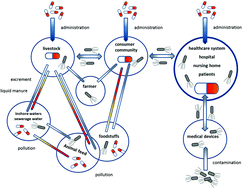Resistance in antimicrobial photodynamic inactivation of bacteria
Abstract
Antibiotics have increasingly lost their impact to kill bacteria efficiently during the last 10 years. The emergence and dissemination of superbugs with resistance to multiple antibiotic classes have occurred among Gram-positive and Gram-negative strains including Enterococcus faecium, Staphylococcus aureus, Klebsiella pneumoniae, Acinetobacter baumannii, Pseudomonas aeruginosa and Enterobacter strains. These six superbugs can “escape” more or less any single kind of antibiotic treatment. That means bacteria are very good at developing resistance against antibiotics in a short time. One new approach is called photodynamic antimicrobial chemotherapy (PACT) which already has demonstrated an efficient antimicrobial efficacy among multi-resistant bacteria. Until now it has been questionable if bacteria can develop resistance against PACT. This perspective summarises the current knowledge about the susceptibility of bacteria towards oxidative stress and sheds some light on possible strategies of the development of photodynamic inactivation of bacteria (PACT)-induced oxidative stress resistance by bacteria.


 Please wait while we load your content...
Please wait while we load your content...